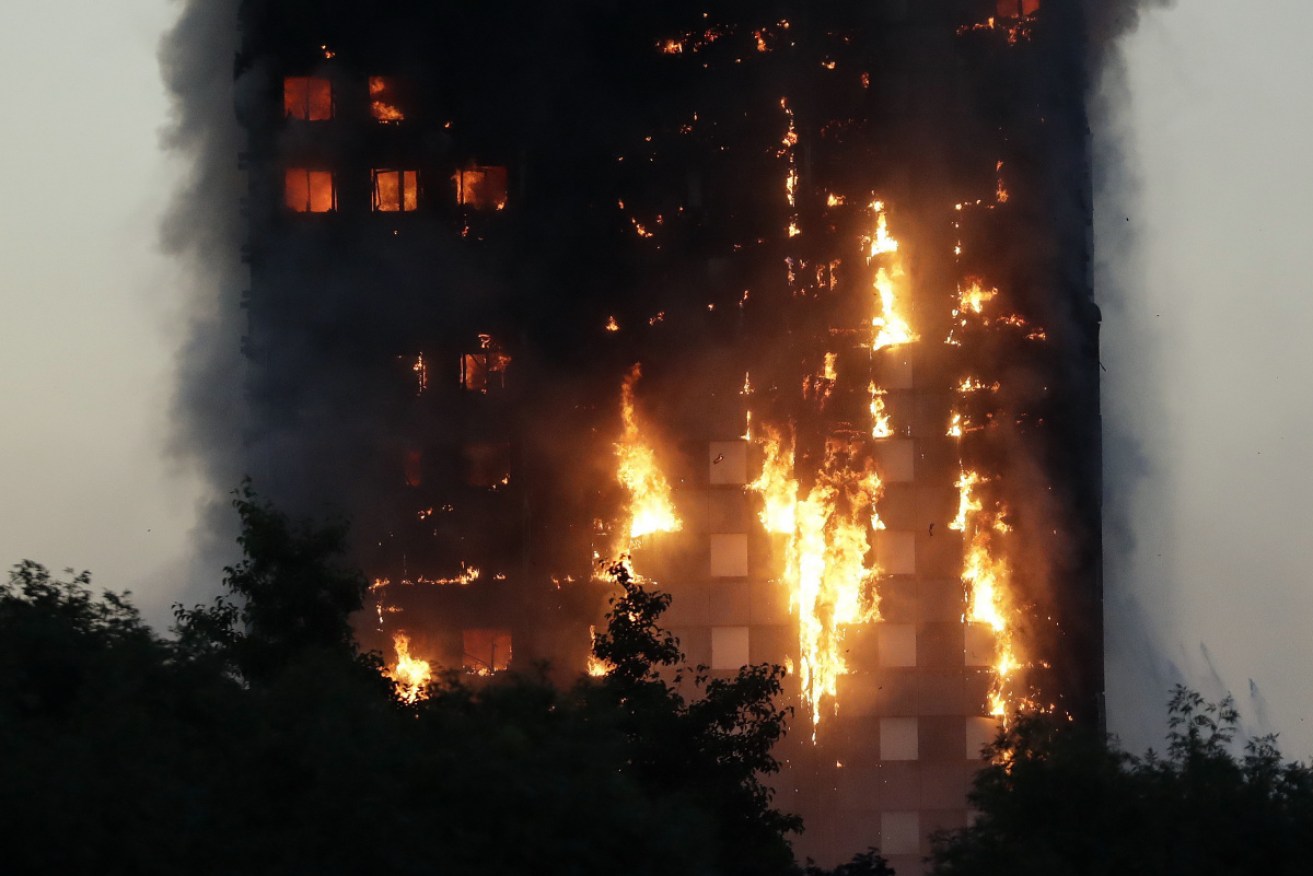‘No more than a kitchen fire’ – Damning report into Grenfell Tower finds more people could have been saved


After the deadly 2017 Grenfell Tower fire in London NSW set up a combustible cladding taskforce. Photo: AAP
A damning report into the Grenfell Tower disaster has found more people could have survived if firefighters gave the correct advice to residents.
But while the initial findings have been scathing of the actions of emergency crews, the inquiry has also further exposed the extent of the danger combustible cladding poses amid revelations about how quickly a “typical” kitchen fire engulfed the whole building.

Flammable cladding on the Grenfell Tower was blamed for accelerating the fire. Photo: AAP
Survivors, and family of the dead, say they hope charges will be laid over the 2017 tragedy that killed 72 people.
The blaze at Grenfell Tower, a 23-storey social housing block owned by one of London’s richest local authorities, shocked Britain and threw up a range of disturbing questions about how the building had been allowed to become a tinderbox.
Residents had initially been advised by firefighters to remain in their flats, even as the fire was clearly spreading.
The report found that a decision to evacuate the tower should have been made between 1.30 and 1.50am – within an hour of the fire starting. This would “likely” have resulted in fewer fatalities.
“In its origin, the fire at Grenfell Tower was no more than a typical kitchen fire,” wrote Martin Moore-Bick, chairman of a public inquiry into the disaster.
There are men, women and children sleeping tonight in buildings with the same flammable cladding that accelerated the Grenfell Tower fire.
So many years after the tragedy, in the sixth richest democracy in the world, we should have done so much more.pic.twitter.com/C5hUJnDPOU
— David Lammy (@DavidLammy) October 30, 2019
Having broken out late at night in a fourth-floor flat because of an electrical fault in a refrigerator, the fire spread to the outside of the building and raced up its facade, which had been fitted with a type of combustible aluminium composite material cladding during a refurbishment completed in 2016.
Within 17 minutes of the first call to emergency services by the tenant of the fourth-floor flat, the fire had reached the 22nd floor, and six minutes after that it had reached the roof.
From there, it engulfed the whole tower, reducing it to a charred ruin by morning.
Listening to Boris Johnson as PM responding to the #Grenfell report will anger many firefighters. He forced through the worst cuts in fire service history.
As mayor and as member of government he has done absolutely nothing to address the warnings given before #Grenfell
— Matt Wrack (@MattWrack) October 30, 2019
Mr Moore-Bick said there was compelling evidence that the external walls did not comply with building regulations because of the cladding and insulation material fitted between it and the original concrete wall.
“They did not adequately resist the spread of fire having regard to the height, use and position of the building. On the contrary, they actively promoted it,” he wrote.
Mr Moore-Bick did not apportion blame for the decision to use the materials in the refurbishment, but said the issue would be at the heart of the second phase of his inquiry, which is already under way and is expected to last about two years.
“The principal focus of Phase 2 will be on the decisions which led to the installation of a highly combustible cladding system on a high-rise residential building and the wider background against which they were taken,” he wrote.
A police investigation into the Grenfell Tower disaster is also ongoing, although officers have said no decision on criminal charges will be made until the public inquiry process has concluded.








